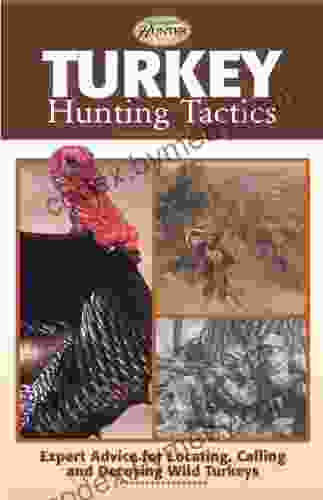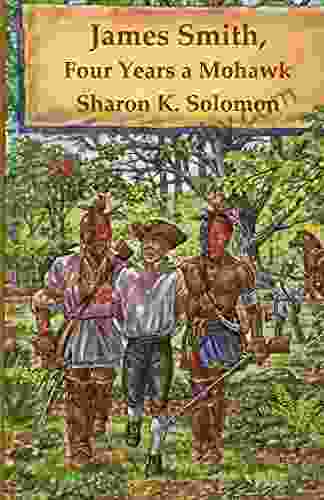Expert Advice For Locating Calling And Decoying Wild Turkeys The Complete Hunter

Wild turkeys are one of the most challenging and rewarding game birds to hunt. They are elusive, wary, and have excellent eyesight and hearing. But with the right strategies, you can increase your chances of success.
This turkey hunting guide is packed with expert advice to help you locate, call, and decoy wild turkeys. You'll learn how to find their favorite haunts, how to call them in close, and how to use decoys to fool them into thinking they're safe.
Whether you're a seasoned turkey hunter or just starting out, this guide will help you take your turkey hunting to the next level.
4.4 out of 5
| Language | : | English |
| File size | : | 8072 KB |
| Text-to-Speech | : | Enabled |
| Screen Reader | : | Supported |
| Enhanced typesetting | : | Enabled |
| Word Wise | : | Enabled |
| Print length | : | 196 pages |
The first step to successful turkey hunting is finding the birds. Wild turkeys prefer to live in areas with plenty of food, water, and cover. They can be found in forests, woodlands, fields, and even urban areas.
To locate wild turkeys, start by scouting the area you plan to hunt. Look for signs of their presence, such as tracks, droppings, and feathers. You can also listen for their calls. Turkeys are known for their distinctive gobbles and clucks.
Once you've found an area where turkeys are active, you need to learn their daily patterns. Turkeys typically feed in the morning and evening, and they roost in trees at night. By understanding their movements, you can increase your chances of finding them.
Calling is one of the most effective ways to attract wild turkeys. There are a variety of different turkey calls available, each with its own unique sound. The most common turkey calls include:
- Gobble: This call is made by male turkeys to attract females. It can also be used to challenge other males.
- Cluck: This call is made by both male and female turkeys. It is used to communicate with other turkeys and to attract mates.
- Yelp: This call is made by young turkeys. It is used to communicate with their parents and to attract other turkeys.
- Kee-kee: This call is made by female turkeys. It is used to attract males and to communicate with other turkeys.
To call turkeys, start by practicing with a turkey call until you can make realistic sounds. Then, use your call to attract turkeys when you're hunting. Be patient and persistent, and you'll eventually be successful.
Decoys are another effective way to attract wild turkeys. Decoys can be used to simulate the presence of other turkeys, and they can also be used to draw turkeys into a specific area.
There are a variety of different turkey decoys available, including:
- Hen decoys: These decoys are designed to look like female turkeys. They are typically used to attract male turkeys.
- Jake decoys: These decoys are designed to look like young male turkeys. They are typically used to attract older male turkeys.
- Beard decoys: These decoys are designed to look like the beards of male turkeys. They are typically used to add realism to a decoy setup.
To use decoys effectively, you need to place them in a realistic setting. Turkeys are more likely to approach decoys that are placed in areas where they would naturally find food or cover.
Once you've located, called, and decoyed wild turkeys, it's time to hunt them. There are a variety of different turkey hunting methods, but the most common method is to ambush turkeys from a blind or treestand.
To ambush turkeys, you need to find a spot where turkeys are likely to pass. Then, set up your blind or treestand and wait for the turkeys to come by. Be patient and still, and you'll eventually get a shot.
Turkey hunting is a challenging but rewarding sport. By following the expert advice in this guide, you can increase your chances of success. So what are you waiting for? Get out there and start hunting turkeys today!
4.4 out of 5
| Language | : | English |
| File size | : | 8072 KB |
| Text-to-Speech | : | Enabled |
| Screen Reader | : | Supported |
| Enhanced typesetting | : | Enabled |
| Word Wise | : | Enabled |
| Print length | : | 196 pages |
Do you want to contribute by writing guest posts on this blog?
Please contact us and send us a resume of previous articles that you have written.
 Book
Book Novel
Novel Page
Page Chapter
Chapter Text
Text Story
Story Genre
Genre Reader
Reader Library
Library Paperback
Paperback E-book
E-book Magazine
Magazine Newspaper
Newspaper Paragraph
Paragraph Sentence
Sentence Bookmark
Bookmark Shelf
Shelf Glossary
Glossary Bibliography
Bibliography Foreword
Foreword Preface
Preface Synopsis
Synopsis Annotation
Annotation Footnote
Footnote Manuscript
Manuscript Scroll
Scroll Codex
Codex Tome
Tome Bestseller
Bestseller Classics
Classics Library card
Library card Narrative
Narrative Biography
Biography Autobiography
Autobiography Memoir
Memoir Reference
Reference Encyclopedia
Encyclopedia Chris J Ellis
Chris J Ellis Clara Ingram Judson
Clara Ingram Judson Claire Wilcox
Claire Wilcox Rick Monday
Rick Monday John Rossman
John Rossman Christopher Hitchens
Christopher Hitchens Christopher Button
Christopher Button Christopher Maynard
Christopher Maynard Clara E Hill
Clara E Hill Chip Kidd
Chip Kidd Chris Chambers
Chris Chambers Cindy Woodsmall
Cindy Woodsmall John Warrillow
John Warrillow Clare Walker Leslie
Clare Walker Leslie Clara Silverstein
Clara Silverstein Christopher Many
Christopher Many Sarah Bond
Sarah Bond Coco Simon
Coco Simon Erica L Ball
Erica L Ball Paul J Batura
Paul J Batura
Light bulbAdvertise smarter! Our strategic ad space ensures maximum exposure. Reserve your spot today!
 Seth HayesFollow ·5.6k
Seth HayesFollow ·5.6k Barry BryantFollow ·5.1k
Barry BryantFollow ·5.1k Camden MitchellFollow ·14.9k
Camden MitchellFollow ·14.9k Yasunari KawabataFollow ·4.6k
Yasunari KawabataFollow ·4.6k Ian MitchellFollow ·17k
Ian MitchellFollow ·17k Jason ReedFollow ·3.9k
Jason ReedFollow ·3.9k Brody PowellFollow ·10.3k
Brody PowellFollow ·10.3k Kazuo IshiguroFollow ·19.3k
Kazuo IshiguroFollow ·19.3k

 Rick Nelson
Rick NelsonThe Power of Positivity: 51 Motivational Quotes to...
In the tapestry of life, we encounter...

 Lee Simmons
Lee SimmonsThe Indian War of 1864: A Devastating Conflict in the...
The Indian War of 1864 was a brutal...

 Eddie Bell
Eddie BellQueen: The Unauthorized Biography: Unraveling the Secrets...
Prepare to delve into the captivating...

 Dion Reed
Dion ReedUnveiling the Imperfect Gems of Trauma and...
In the tapestry of...

 Desmond Foster
Desmond FosterThirty-Six Years in the Rockies: A Timeless Masterpiece...
A Journey Through Time and...
4.4 out of 5
| Language | : | English |
| File size | : | 8072 KB |
| Text-to-Speech | : | Enabled |
| Screen Reader | : | Supported |
| Enhanced typesetting | : | Enabled |
| Word Wise | : | Enabled |
| Print length | : | 196 pages |













